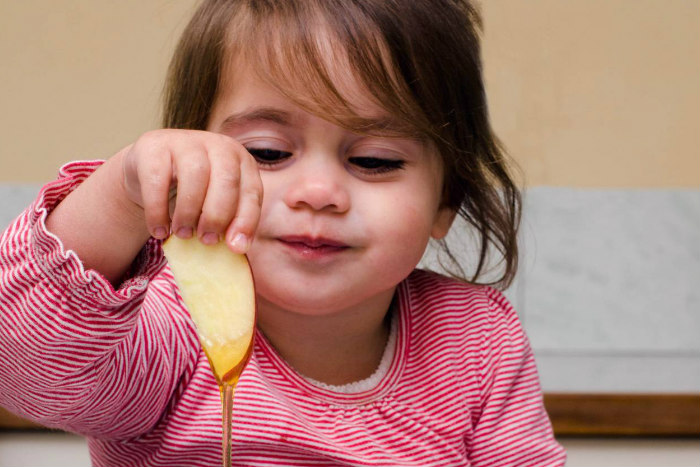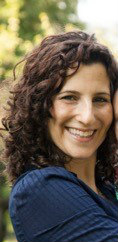
On Rosh HaShanah, our Jewish new year, we greet one another by saying, “L’shanah tovah u’metukah! May you have a good and sweet new year!” This sacred occasion, which falls on the first of the Jewish month of Tishrei, marks the official start of the High Holiday season, also called the Yamim Noraim, or the Days of Awe.
Throughout Rosh HaShanah, we devote ourselves to looking back on the year that has passed and looking ahead to the year that has yet to come. It is a time to pause, reflect, and take stock of the choices we have made; to wrestle with who we are and who we want to be; and to seek forgiveness – and grant it as well, as we do our best to wipe the slate clean, and begin again. Every new year brings with it a fresh, new start.
In a typical year, much of Rosh HaShanah may be spent with our communities in synagogue. Sanctuaries are often overflowing, and seats become a hot commodity! This year will be different. Nonetheless, as we stand before each other and before God (another name for the holiday is Yom Ha-Din, Day of Judgment), we do so knowing we are not alone. All of us have made mistakes at one time or another; all of us have done things of which we are not very proud. In asking for forgiveness and understanding, we all bear witness to each other.
Rosh HaShanah is observed for two days in Israel and either one or two days in North America (learn more about how Reform Jews celebrate). During the holiday, synagogues hold worship services in both the evening and morning. This year, many synagogues will be livestreaming in every time zone or holding other virtual and physically distanced events; find a congregation near you.
Throughout our services, we use music that is special to the High Holidays (called High Holiday nusach), and we recite numerous prayers and readings that are specific to the holiday as well.
In our Rosh HaShanah machzor (prayer book for the High Holidays), we portray God as a ruler in the Avinu Malkeinu, as we ask for compassion on our souls, forgiveness for our sins, and healing for our broken world. On Rosh HaShanah afternoon, we find a running body of water and “throw away our sins” using breadcrumbs that we tear and toss into the water. This meditative ritual is called Tashlich.
But perhaps the most recognizable part of the Rosh HaShanah liturgy is the service for the sounding of the shofar, the ritual ram’s horn.
When we blow the mighty shofar on Rosh HaShanah (with a tekiah, a shevarim, and a teruah – the three distinct calls, along with the great, long tekiah g’dolah), we jolt ourselves awake! Wake up, and if you have done something wrong, make it right! Wake up and notice all of the sadness and heartache in the world all around you! Wake up and realize that you can change the world for the good! The shofar is our alarm bell, our new year’s buzzer keeping us honest and true and aware. It is a mitzvah to hear the shofar blown, and a requirement of the holiday that we ourselves must fulfill. It isn’t enough to just listen; Rosh HaShanah is when we pledge to act.
We have 10 ten days between Rosh HaShanah and Yom Kippur to think about people we have hurt, to reach out to them, and to apologize for the way we have behaved. We have 10 days to repair relationships, 10 days to think about how we can be better mothers, fathers, sisters, brothers, daughters, sons, and friends. This time is a beautiful opportunity to write letters, make phone calls, and approach our loved ones face to face to say we are sorry for the past and to express what we’d like to do better in the future.
But as serious as Rosh HaShanah can be, it is also a wondrous celebration. Our tradition considers Rosh HaShanah to be Hayom Harat Olam, the birthday of the world! On this day, we celebrate the miracle of creation and the astounding world around us. We give thanks for the beauty of nature and for all the gifts the earth bestows upon us. And we rejoice in the birth of possibility and in our endless potential for growth.
At home, we eat a delicious festive meal with family and friends. We munch on apples and honey for a sweet new year, and we bless round challah to remind us of the never-ending circle of life. We also eat pomegranates, which are said to have 613 seeds and mystically correspond to the 613 mitzvot in our Torah. In the Sephardic community, families commonly gather for a Rosh HaShanah seder filled with all kinds of symbolic foods that express a hope or a wish for the coming new year. A typical Sephardic menu might include string beans, pumpkin, leeks, dates, beets, Swiss chard, and, sometimes even a fish head, that we should be like “the head and not the tail” – along with apples and honey, of course. (Deuteronomy 28:13).
At home and with our communities, whether in person or vitual, Rosh HaShanah grants us special opportunities to think deeply about our lives, our friendships, and our responsibilities to those around us. Our prayers inspire us to seek forgiveness and embrace change. The blasts of the powerful shofar encourage us to rise up, open our eyes, and take action where it is most needed in the world. Our festive meals give rise to our hopes and dreams for a prosperous future.
On this sacred day of Rosh HaShanah, one of the holiest on the Jewish calendar, we come together as one community to humbly, joyfully, and thoughtfully welcome the new year and all the wondrous possibilities that the year may bring.
L’shanah tovah u’metukah, may it be a good and sweet and meaningful Rosh HaShanah for us all!
